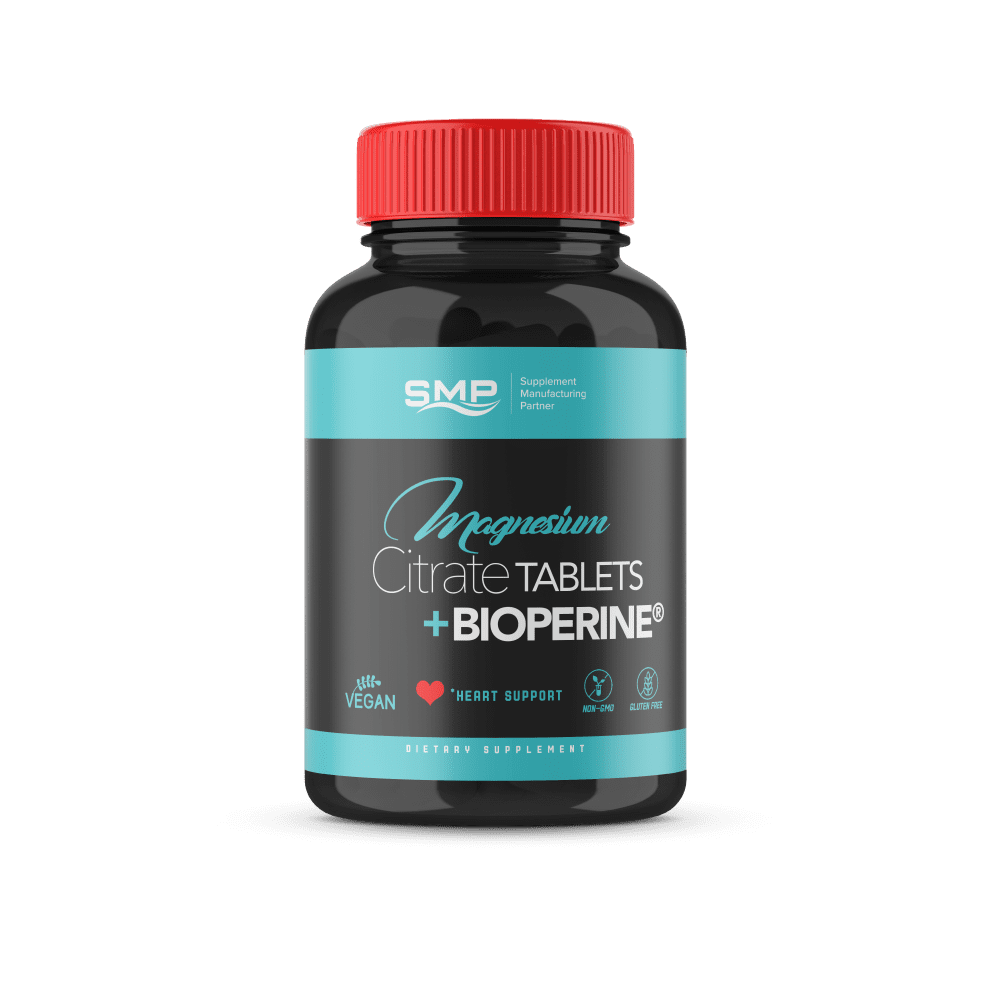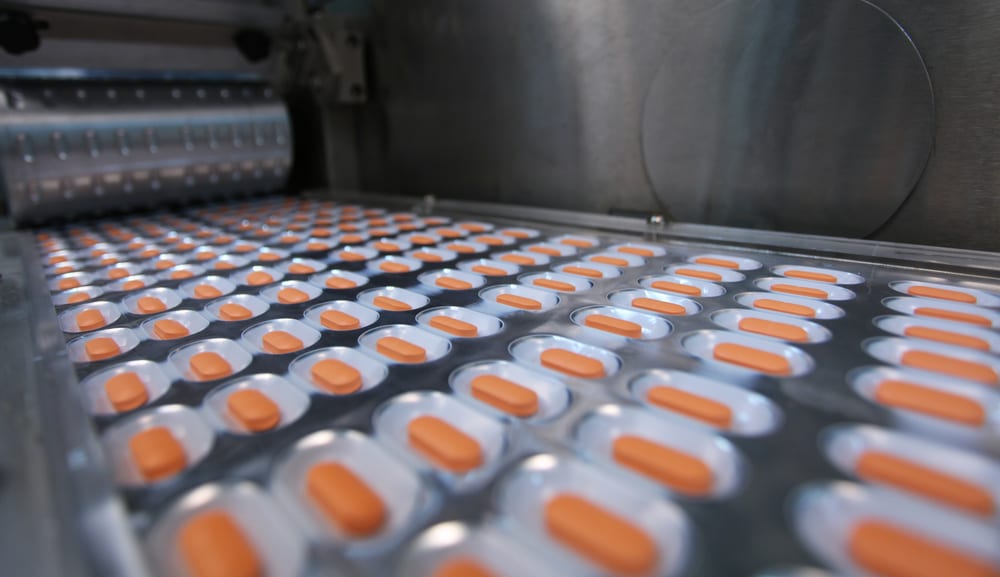
Today, tablet manufacturing is on the rise. Companies are more likely to manufacture a supplement as a tablet than any other dosage form. In fact, almost one-half of all drugs are tablets.
Scientists define tablets by their solid form. They typically consist of active pharmaceutical ingredients and excipients. Manufacturers use these substances to bulk up and stabilize the mixture.
Tablets come in all different shapes, sizes, and weights. Their size and shape depend on their intended use and method of manufacture.
Often, we classify tablets by how they are made, either as compressed tablets or molded tablets.
Tablet Manufacturing Process
The goal of manufacturing is to create tablets that are chemically stable, uniform in size and shape, and capable of dealing with the shocks associated with production and delivery.
Creating tablets that are uniform in both form and substance requires a process that ensures consistency.
Tablet manufacturing is a complicated process that includes multiple stages of production.
This process transforms the active ingredients into a new substance. The substance delivers the correct dosage at the proper time.
There are three main methods of manufacturing: wet granulation, dry granulation, and direct compression.
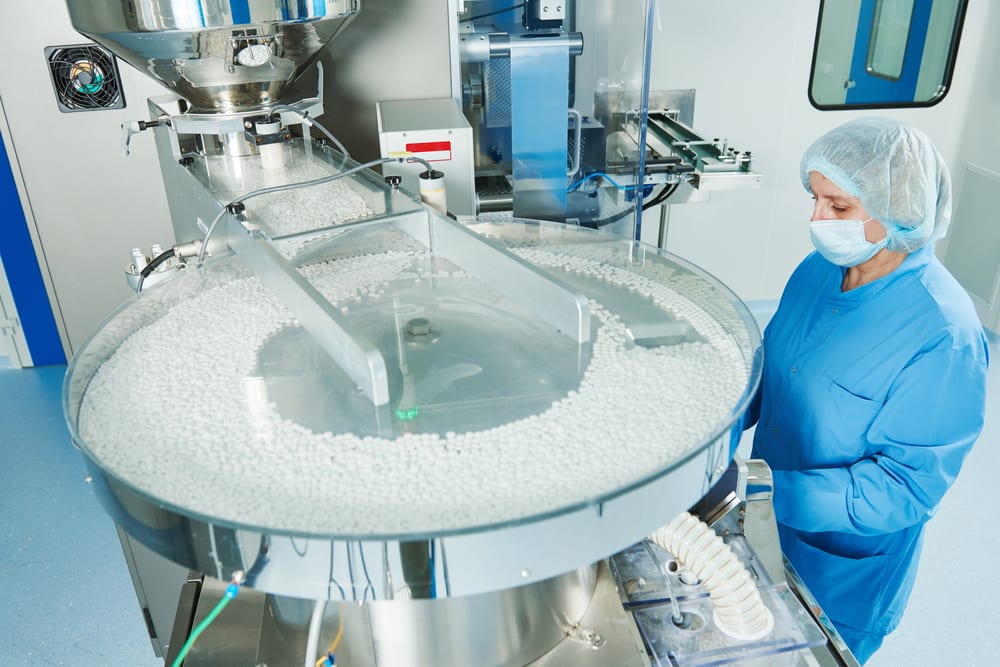
Wet Granulation
This is one of the most common methods for tablet manufacturing. This method uses a liquid to agglomerate the dry powder.
Often, the liquid is used in combination with a binder or binding agent. This ensures that the mixture remains strong. Binders may include natural gums or gelatin.
These substances must be carefully controlled and measured. Technicians ensure that the tablet does not turn out to be too soft or too fragile.
The process for manufacturing tablets by the wet granulation method is as follows:
- Ingredients and bulking agents are carefully weighed and measured.
- Technicians add the liquid binder to the powder.
- A screen forms pellets out of the mixture.
- The granulation dries in a dryer.
- The granules mix together with other substances, such as lubricants.
- The granules pass through another screen. It compresses each tablet into a uniform size and shape.
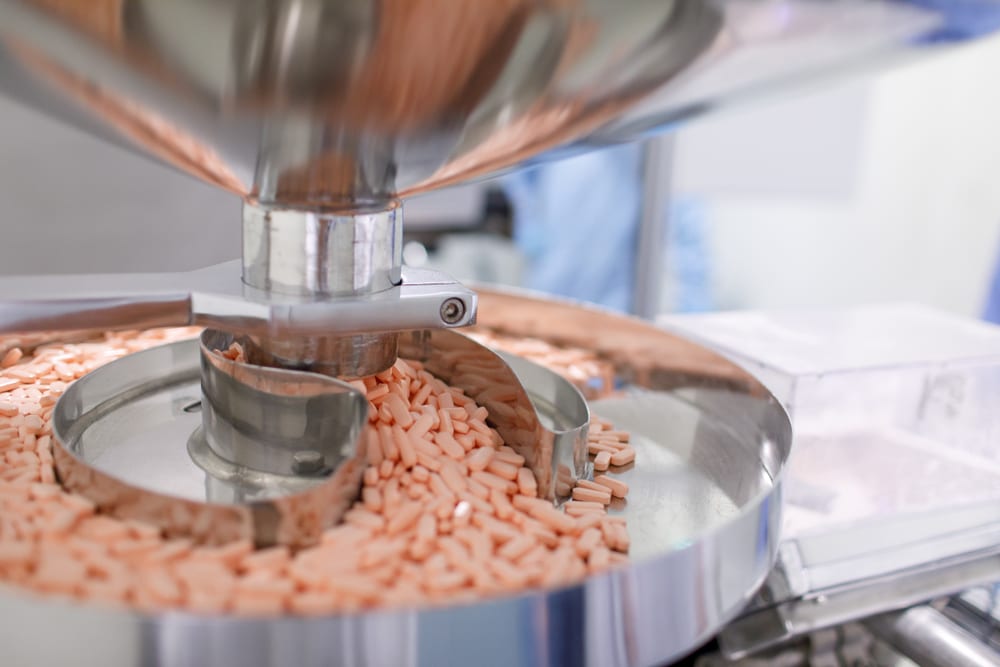
Dry Granulation
This is a process for manufacturing tablets without using a liquid binder. Instead of using moisture and heat to bind the mixture, this method uses compaction to create the granules.
Although less popular than wet granulation, dry granulation may be used when the substance is sensitive to liquid or heat.
The process begins with the compression of powder particles into compacts. This is typically completed by a tablet press or rotary press.
A screen then processes the compacts and breaks them down into granules. This method is typically conducted in one of two ways: using slugging tooling or on a roller compactor.
This method has fewer steps than wet granulation. It also requires less equipment. It is a particularly useful method for substances that are sensitive to moisture and heat.
Dry granulation is simpler and less costly. However, it is not necessarily the preferred method of manufacturing tablets. In recent years, the popularity of this method has decreased. On the other hand, direct compression is more widely used.
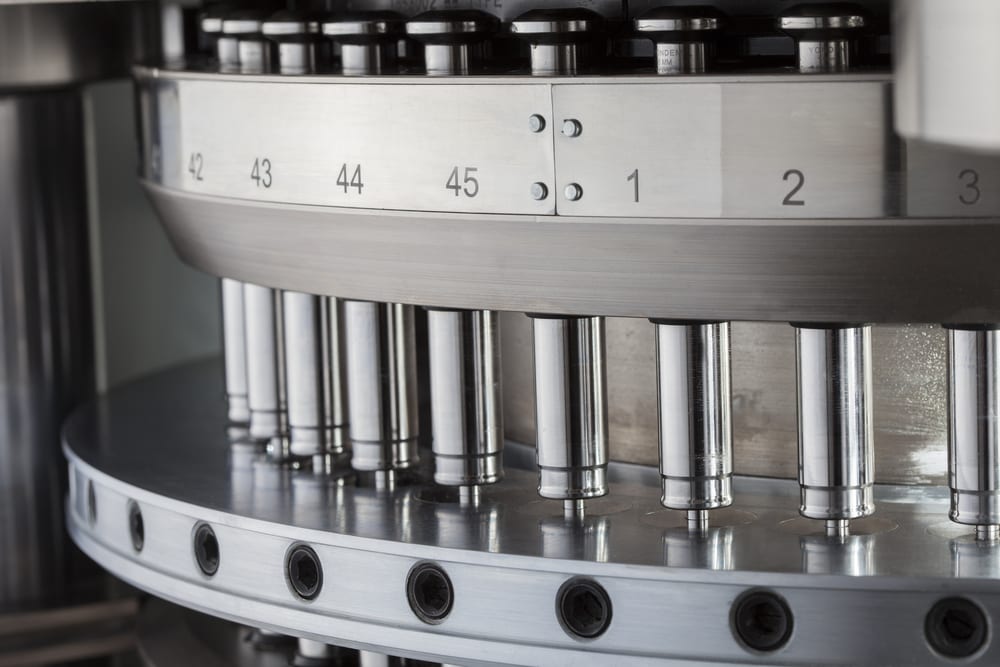
Direct Compression
This method avoids the need for granulation in the manufacturing process.
Unlike the wet and dry granulation methods, this method only includes powder mixing and compression. Fewer processing steps means that direct compression is both more efficient and less costly.
At SMP Nutra, tablet manufacturing has an average 4-week delivery time because our manufacturing is in-house.
Since this method is a simple process, there are fewer differences in each batch. There is also greater stability across the batch.
It does not require heat or moisture. It can also be used with sensitive agents.
These benefits make this method the most widely used for manufacturing today.
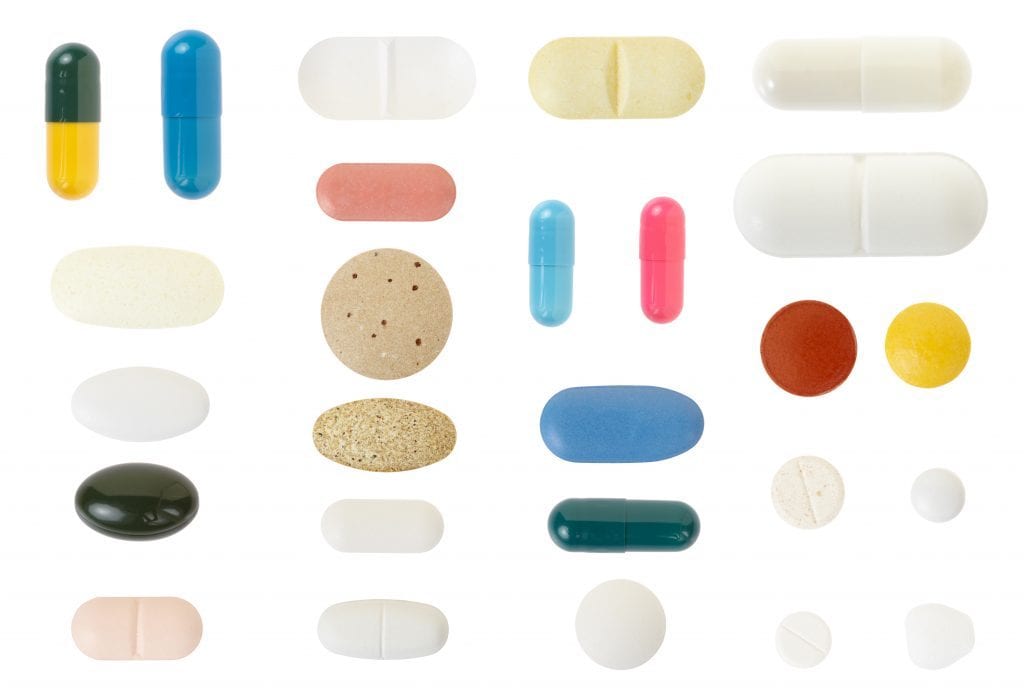
Types of Tablets
Tablets come in all different shapes, sizes, and weights.
However, most tablets are round or capsule-shaped. This allows patients to easily swallow them. The size of the tablet often depends on its intended use.
The tablet must be hard enough to stay together in its packaging. It must also be soft enough to dissolve during digestion.
Tablets include both pills and caplets. Pills are small, round, solid dosage forms. Caplets are smooth, capsule-shaped tablets.
Many consumers view capsules as a more efficient way of swallowing a tablet. Today, companies design tablets in many different shapes and colors. This helps distinguish the medication from other brands.
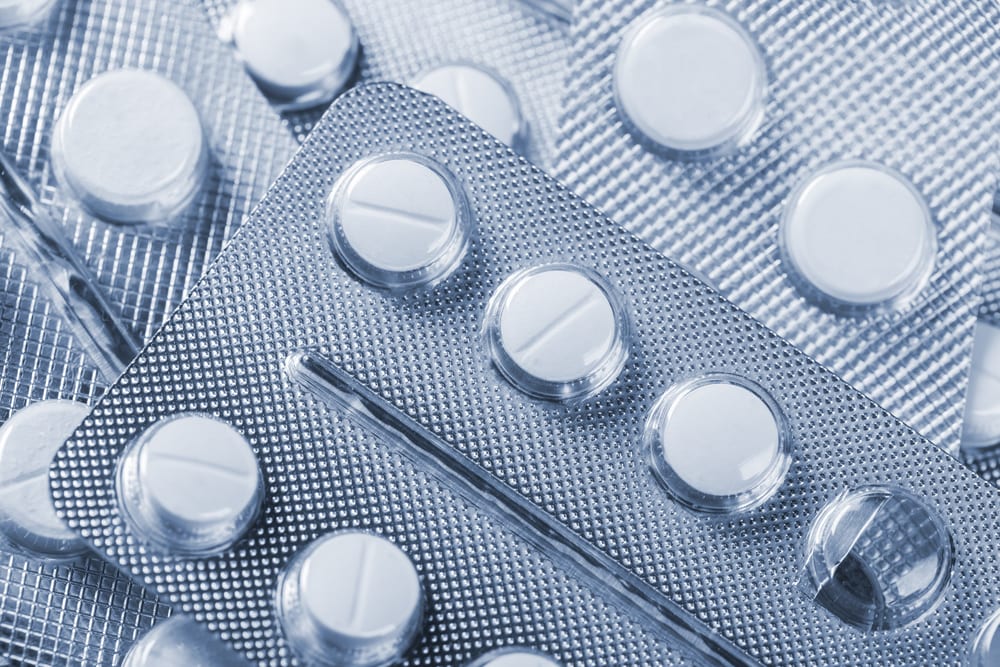
Benefits of Tablets
Tablet manufacturing offers many clear benefits. The most significant benefit is the ability to mass-produce at a low cost. In terms of production and distribution, tablets provide an easy and safe way to package and ship.
Many companies pack tablets in “blister packs,” which allow users to view the tablets without opening the packaging.
Doctors and patients often prefer tablets. This is because they’re light in weight and easy to handle. Unlike other dosage forms, tablets offer a high degree of stability and allow for greater accuracy in measuring dosages.
In addition, tablets can be customized with color coatings and other markings. These designs allow users to easily identify the tablet and distinguish it from other medications.
For pharmaceutical companies and manufacturers, it provides them with the opportunity to imprint their brand image onto the product itself.
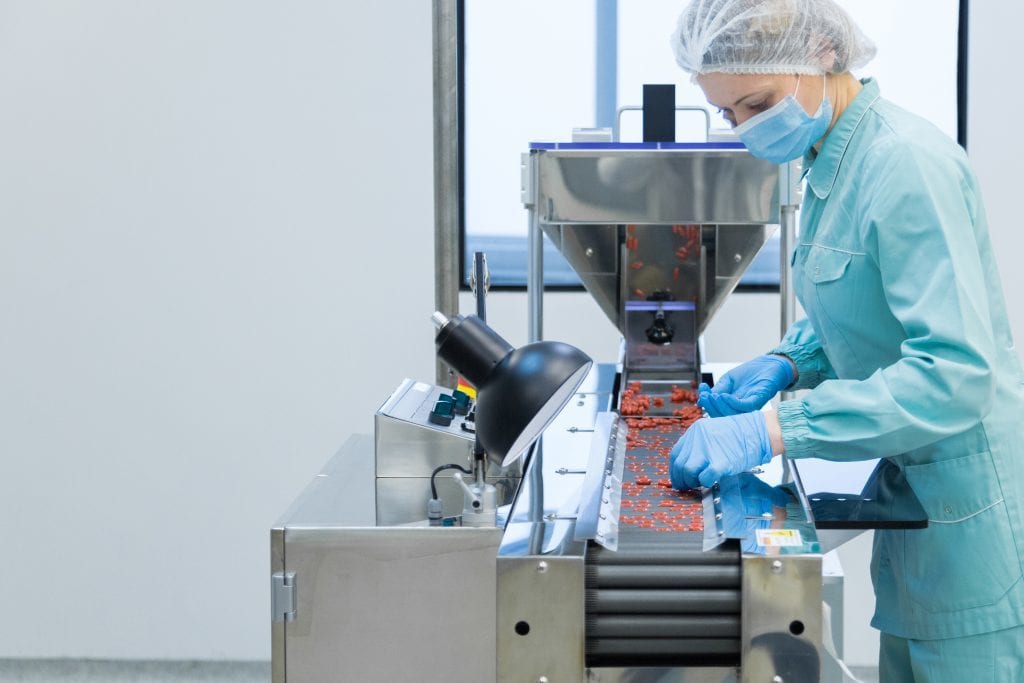
Drawbacks of Tablets
Despite these benefits, there are several drawbacks to consider. First, it may be hard for some people, especially children and the elderly, to swallow tablets.
Additionally, some evidence suggests that there may be variation in the way different patients absorb tablets. This absorption depends on the digestive system’s ability to process active ingredients.
It’s important to realize that some drugs simply are not suitable for the tablet dosage form. In particular, drugs that dissolve slowly or have large dosages may be difficult to manufacture as a tablet.
Insulin, for example, must be injected into the body. Since it is composed of proteins, the digestive system would not handle it properly if taken by mouth. Therefore, it cannot be taken orally.
Custom Tablet Manufacturing
Tablet manufacturing is fast and cost-effective. It allows for a high degree of customization. It also maintains the stability of the substance. At SMP Nutra, we manufacture tablets using premium press and coating machines.
Our tools create custom tablets that are high quality and that give consumers a high degree of choice in designing their tablets.


